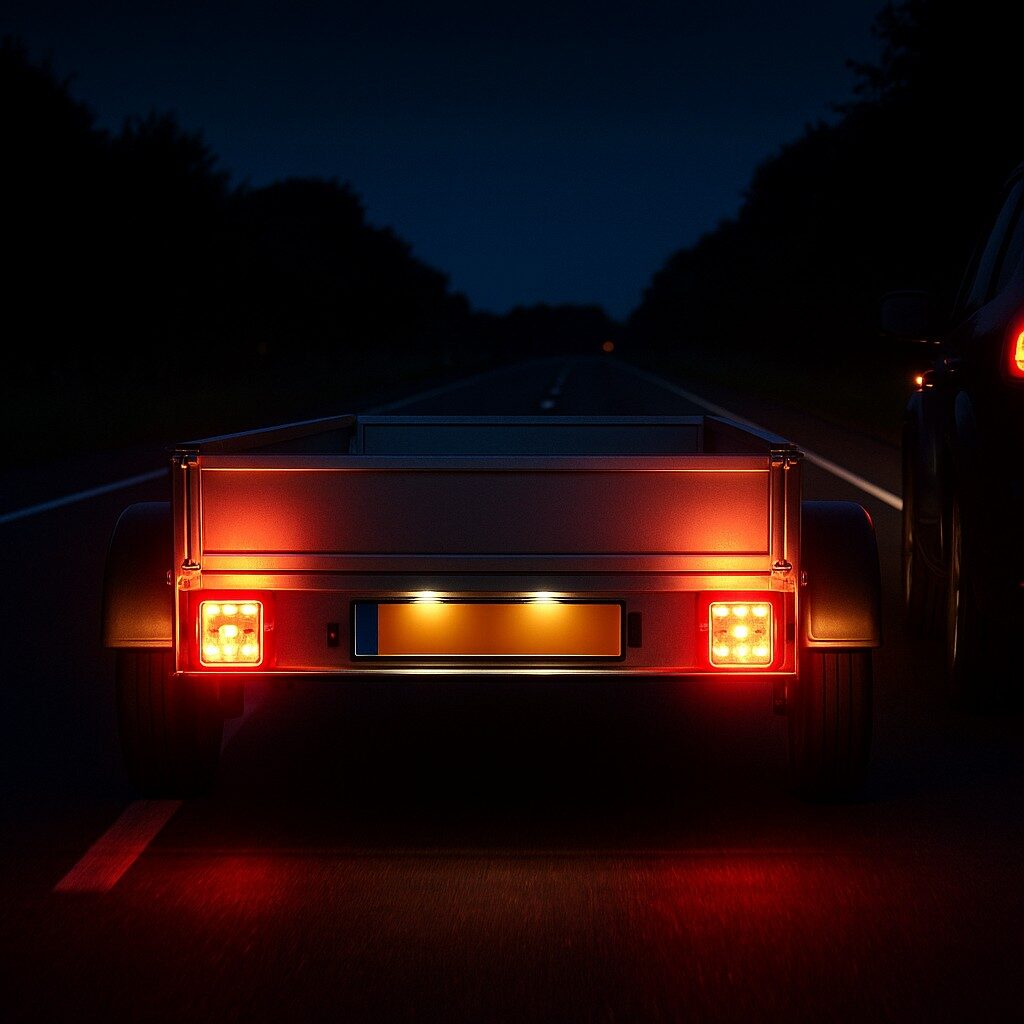Brighter vehicle lights are one of the most talked-about motoring issues in the UK right now. Many drivers say oncoming headlights are dazzling and uncomfortable, especially at night or in wet weather.
For those towing caravans, horseboxes, or trailers, glare can make judging distances and road position even harder.
At Towing Solutions, we focus on safer, compliant towing — and that includes better lighting. Whether it’s headlight alignment or trailer LEDs, visibility is key to preventing roadside incidents and keeping everyone safe.
What Is Headlight Glare?
Headlight glare (or “dazzle”) occurs when a vehicle’s lights shine too brightly or at the wrong angle, temporarily reducing another driver’s vision. The Department for Transport (DfT) defines it as one of the leading causes of discomfort glare among UK motorists.
Research commissioned by the DfT and carried out by TRL (Transport Research Laboratory) in 2024–25 found that almost every UK driver experiences some level of glare. More than half of those surveyed said the problem has worsened in recent years — particularly due to the growing use of LED lighting systems.
Are Headlights Getting Brighter?
Yes. Modern LED headlights emit up to 200 lumens per watt, compared with about 24 lumens per watt from traditional halogen bulbs. LEDs also produce a much whiter light (around 5,000–6,500 Kelvin) that more closely resembles daylight.
While this helps drivers see further ahead, the concentrated beam pattern can dazzle oncoming traffic more easily — especially if headlights are misaligned or dirty.
The Driver and Vehicle Standards Agency (DVSA) reports that headlamp aim consistently ranks among the most common MOT test failures. Of over 32 million MOT tests carried out on Class 4 vehicles in 2022, around 1.6 million failed due to misaligned headlights.
How Glare Affects Drivers Towing Caravans or Trailers
Drivers towing trailers or caravans are particularly vulnerable to glare because of:
-
Multiple reflective surfaces, mirrors, and rear windows amplifying oncoming light
-
Longer braking distances and slower manoeuvres
-
Height differences between vehicles and trailers that affect how light beams interact
Many drivers say they avoid night-time towing altogether due to glare from modern vehicles. Yet equally, towing without adequate lighting can be just as dangerous.
Why Trailer Lighting Matters
Under the Highway Code (Rule 114) and the Road Vehicles Lighting Regulations 1989, drivers must not use lights that dazzle other road users, and all trailers must display working:
-
Rear lights
-
Brake lights
-
Indicators
-
Reflectors
If any of these are dim, flickering or misaligned, the trailer becomes far less visible — especially on unlit roads. This risk increases in rain, fog or winter darkness.
The Case for LED Trailer Lights
Modern LED trailer lighting dramatically improves visibility and reliability. At Towing Solutions, we recommend and supply Lucidity LED trailer lights, used by leading UK trailer manufacturers and trusted across commercial fleets.
Benefits include:
-
Consistent brightness for clearer signals and braking awareness
-
Energy efficiency, ideal for hybrid and electric towing vehicles
-
Durability against vibration, water and corrosion
-
Faster response times — LEDs illuminate about 200 milliseconds quicker than filament bulbs, giving following drivers extra reaction time
-
Full compliance with UK and EU type-approval standards (E-marked)
LEDs also maintain visibility over time, whereas halogen bulbs dim as they age. Fitting reliable, legal LED lights is a simple but powerful way to improve night-time towing safety.
Government and Industry Response
The UK Government is reviewing headlight brightness standards through the Department for Transport’s Headlight Glare Study.
This follows parliamentary debate and pressure from motoring and safety groups for clearer regulation on LED brightness, beam height, and automatic adjustment systems.
Internationally, the United Nations Economic Commission for Europe (UNECE) is developing new standards for adaptive LED lighting to minimise glare while retaining brightness benefits.
Practical Steps to Reduce Glare and Improve Towing Visibility
The DfT and College of Optometrists recommend:
-
Keep windscreens, headlights and trailer lights clean and free from dirt.
-
Have headlamp aim checked at every service or MOT.
-
Dip headlights appropriately when approaching or following traffic.
-
Avoid non-approved aftermarket LED conversions.
-
Inspect all trailer lights before each journey.
-
Replace worn reflectors or damaged lenses promptly.
For businesses, our Trailer Servicing & Maintenance Courses include electrical checks, lighting diagnostics and fault-finding — ensuring your fleet remains compliant with DVSA and Health & Safety Executive (HSE) best practice.
The Bottom Line
Brighter doesn’t always mean safer. As vehicles evolve, it’s crucial for drivers and trailer operators to adapt with them.
Correctly aligned vehicle lights and high-quality LED trailer lighting can reduce accidents, prevent breakdowns and ensure trailers remain visible in all conditions.
At Towing Solutions, we help UK drivers, technicians and fleet operators stay compliant and confident — combining professional training with durable, energy-efficient Lucidity LED products.
Learn more:
https://www.towing-solutions.co.uk

